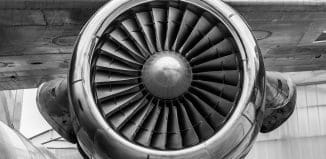Soon Drones Could 3D Print Buildings
This post is also available in:  עברית (Hebrew)
עברית (Hebrew)
Swarms of unmanned aerial vehicles (UAV) will soon be printing emergency shelter for survivors of natural disasters, or buildings, or any large structure. This according to Dr Mirko Kovac of the Department of Aeronautics at the Imperial College London.
Dr Kovac and his team are working with nearly five million dollars they received from the Engineering and Physical Sciences Research Council and industrial partners to foster the development of aerial construction robots. These machines, equipped with 3D printing technology, can excrete materials to construct or repair structures.
One important potential applications is in disaster relief efforts, according to Dr Kovac. Disasters come in many different forms, and each presents its own unique challenges. Some terrain can become impassable due to mudslides or unstable mountainous terrain, preventing rescue teams from reaching those in need in a timely manner.
His construction UAVs could fly to the affected areas, scan them with Building Information Management (BIM) systems to model the terrain, and construct the appropriate and necessary shelters on the spot. This would greatly improve survival outcomes of those awaiting rescue teams’ arrival.
Additive Building Manufacturing (ABM) as it is called is already being trialled by construction firms around the world. Large robots release building materials in a controlled manner to construct structures in a process akin to 3D printing. Using this technology the time needed to build a building is reduced, as well as the material and transport costs.
Moreover, these technologies could greatly improve safety in the building industry. Some 60,000 people perish globally each year, according to the International Labour Organisation. This translates to one person dying every ten minutes. Automating construction, delegating the most dangerous tasks to machines, would greatly improve safety. Current approaches, however, are all ground-based, and can only make small structures.
If Dr Kovac and his team are successful, they will advance ABM technology so construction could be carried out from the air. They plan to miniaturise the technology and aerialise it. When everything is said and done, they will have essentially created mini-flying-factories that will revolutionise construction.





























